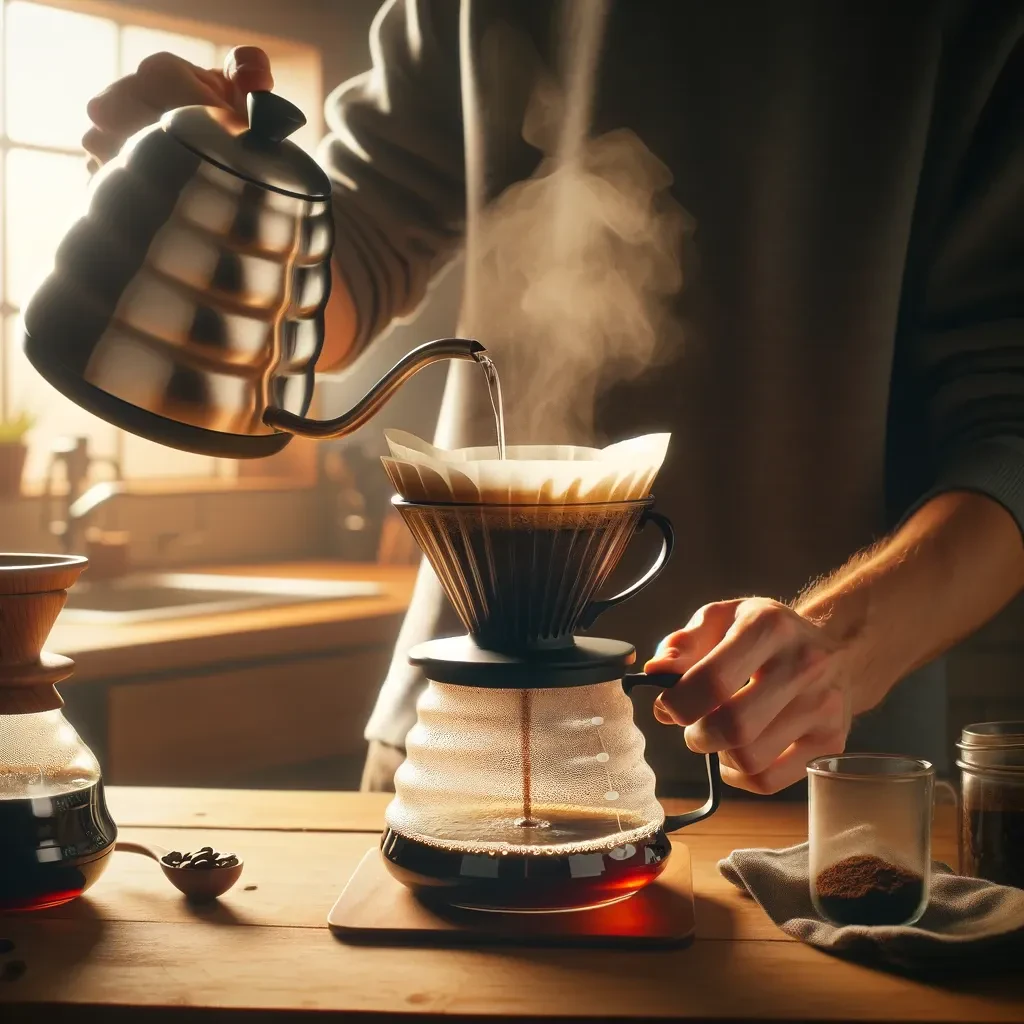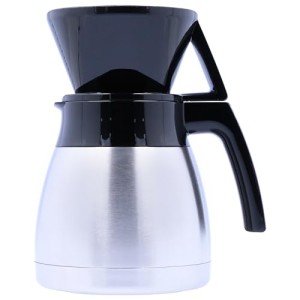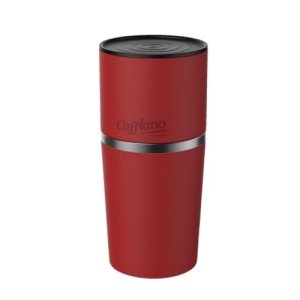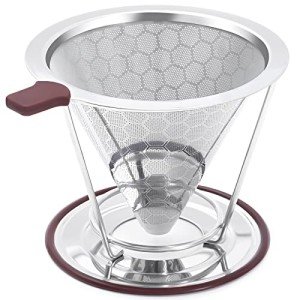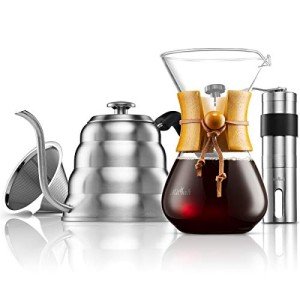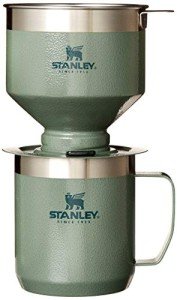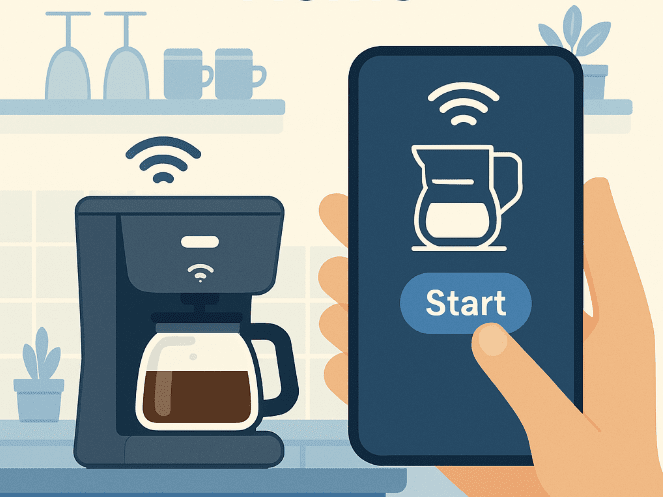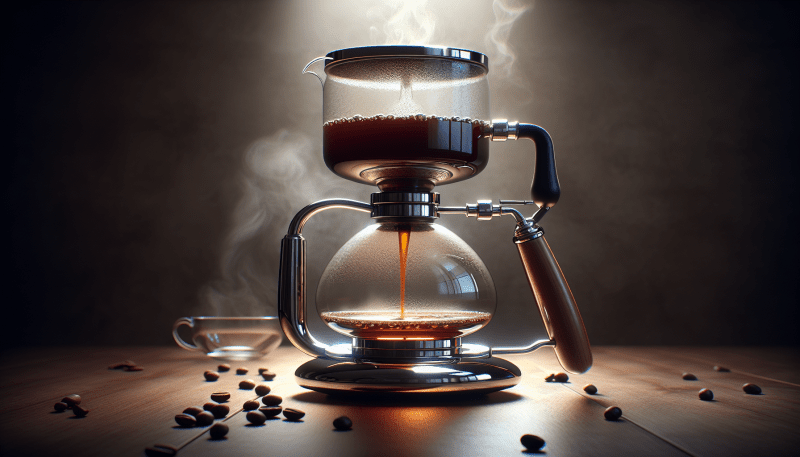Pour Over Perfection: A Complete Guide to Pour Over Coffee Machines
In the world of coffee, the pour over method stands out for its simplicity and the control it offers over the brewing process. This manual technique allows coffee enthusiasts to meticulously craft each cup, highlighting the nuanced flavors of their favorite beans. This guide explores everything you need to know about pour over coffee machines, from the basic equipment to advanced techniques, diving deeper into the nuances of each aspect of this brewing method.
Melitta Pour-Over Coffee Brewer with Carafe Set
Experience the rich flavors of freshly brewed coffee with this easy-to-use pour-over brewer and carafe set
Product information
€42.18 €34.93
Product Review Score
4.7 out of 5 stars
208 reviewsProduct links
What is Pour Over Coffee?
Pour over coffee is a manual brewing method where hot water is poured over coffee grounds in a filter. The water filters through the grounds, extracting flavor and aroma, and drips into a carafe or cup below. This method emphasizes precision, allowing for control over water temperature, flow rate, and brew time, resulting in a clean, flavorful cup of coffee. The interaction between the water and the grounds is a delicate dance, where the brewer acts as the conductor, guiding the extraction to its optimal point. This method allows you to truly taste the terroir of the coffee, the unique characteristics imparted by the growing region and processing methods.
Essential Pour Over Coffee Equipment
To embark on your pour over journey, you'll need a few key pieces of equipment:
- Pour Over Dripper: The heart of the pour over setup. Each dripper is available in various shapes and materials (ceramic, glass, plastic, and stainless steel), influencing the flow rate and heat retention. Popular models include the Hario V60, Kalita Wave, and Chemex. Each dripper's shape and internal design affect the flow of water and the extraction of coffee.
- Gooseneck Kettle: A kettle with a long, narrow spout that provides precise control over the water flow. This is crucial for achieving an even extraction. The gooseneck's design allows for a slow, steady pour, which is essential for consistent extraction.
- Coffee Grinder: A burr grinder is essential for consistent grind size, which significantly impacts the extraction. Consistency in grind size ensures that all coffee particles are extracted evenly.
- Coffee Scale: Accurately measuring the coffee and water is vital for a balanced brew. A digital scale with a timer is ideal for precise measurements.
- Coffee Filters: Choose filters designed for your dripper. Paper filters are the most common, but reusable cloth and metal filters are also available. The type of filter you use can affect the clarity and flavor of your coffee.
- Timer: A timer helps you monitor the brewing time and maintain consistency. Timing is crucial for controlling the extraction and achieving the desired flavor profile.
Types of Pour Over Drippers
Different drippers offer unique brewing experiences:
Hario V60
The Hario V60 is a conical dripper with spiral ribs that promote even extraction. Its versatility and widespread popularity make it a favorite among coffee enthusiasts. The conical shape and spiral ribs encourage a faster flow rate, producing a bright and clean cup of coffee.
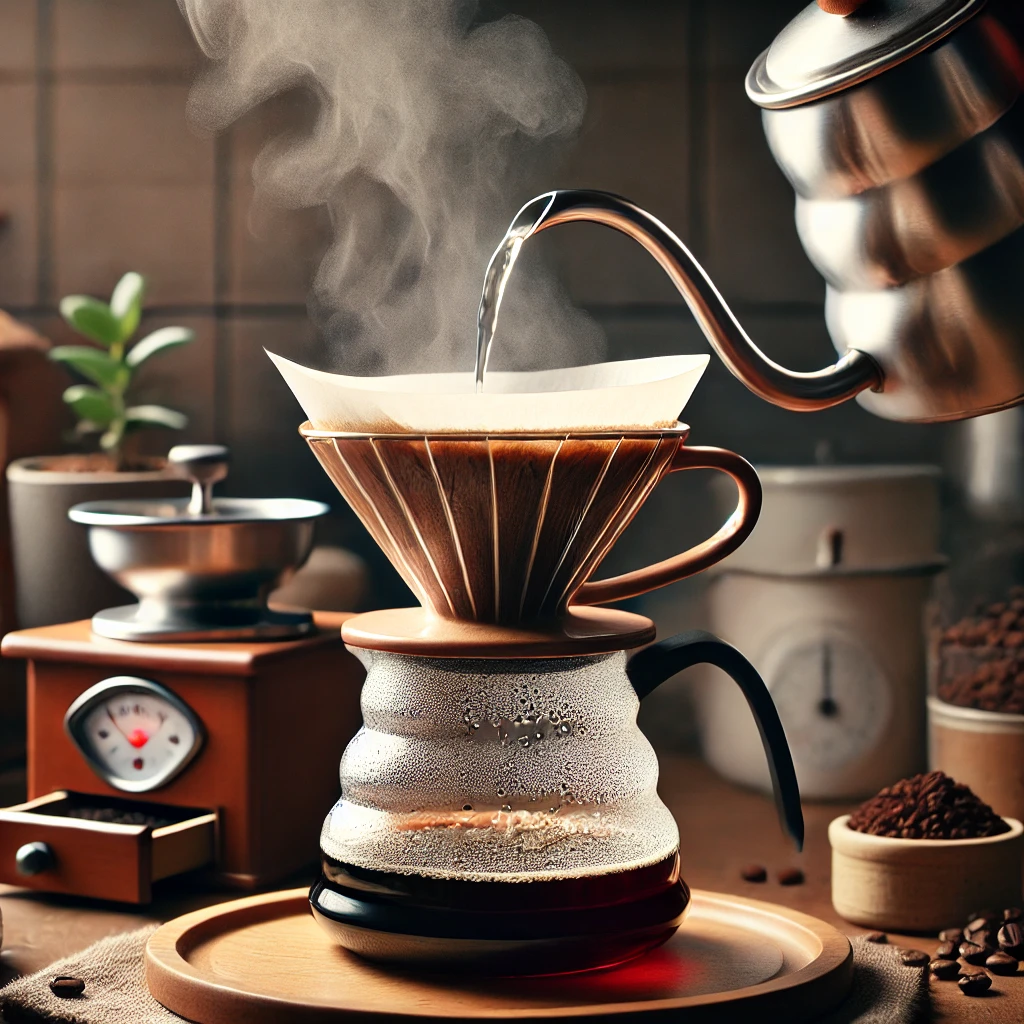
Kalita Wave
The Kalita Wave features a flat-bottom design and wave-shaped filters, ensuring a more consistent and forgiving brew. It's an excellent choice for beginners. The flat bottom and wave filters promote a more even extraction, reducing the risk of channeling and inconsistencies.
Chemex
The Chemex is a one-piece glass dripper and carafe with a thick paper filter that produces a clean, sediment-free cup of coffee. Its elegant design also makes it a stylish addition to any kitchen. The thick paper filter removes oils and sediment, producing a very clean and bright cup of coffee.
Pour Over Coffee Brewing Techniques
Mastering the pour over technique involves several steps:
- Grind the Coffee: Grind your coffee beans to a medium-fine consistency. The ideal grind size is similar to that of coarse sand.
- Prepare the Filter: Place the filter in the dripper and rinse it with hot water to remove any paper taste and preheat the dripper. Rinsing the filter also helps to preheat the dripper and maintain a consistent brewing temperature.
- Add the Coffee: Discard the rinse water and add the ground coffee to the filter. Level the coffee bed for even extraction.
- Bloom the Coffee: Pour a small amount of hot water (about twice the weight of the coffee) over the grounds and wait for 30-45 seconds. This allows the coffee to release trapped gases and enhances flavor extraction. The bloom is a crucial step that allows the coffee to degas and prepare for extraction.
- Pour the Water: Slowly and evenly pour the remaining water over the grounds in a circular motion. Maintain a consistent flow rate and avoid pouring directly onto the filter's edges. A consistent pour rate ensures even saturation and extraction.
- Brew Time: Aim for a total brew time of 3-4 minutes. Adjusting the grind size and pour rate can influence the brew time.
- Enjoy: Remove the dripper once the water has fully drained, and enjoy your freshly brewed coffee.
Tips for Perfect Pour Over Coffee
- Water Temperature: For optimal extraction, use water between 195-205°F (90-96°C). A precise temperature ensures optimal flavor extraction.
- Coffee-to-Water Ratio: A common ratio is 1:15 to 1:17 (e.g., 30g of coffee to 450-510g of water). Adjust the ratio to your preference. This allows you to control the strength and concentration of your coffee.
- Grind Size: Experiment with different grind sizes to find the perfect balance of flavor and extraction. Grind size significantly impacts the extraction rate and flavor profile.
- Pouring Technique: Practice your pouring technique to achieve a consistent flow rate and even saturation. A consistent pour ensures even extraction and a balanced cup.
- Freshness Matters: For the best flavor, use freshly roasted coffee beans and grind them just before brewing. Freshly roasted and ground coffee provides the most vibrant and nuanced flavors.
- Water Quality: Use filtered water to avoid introducing unwanted flavors into your coffee. The quality of your water can significantly impact the taste of your coffee.
- Preheat Equipment: Preheat your dripper, carafe, and mug to maintain a consistent brewing temperature. This ensures even extraction.
Pour Over Coffee Machine Maintenance and Troubleshooting
Maintaining your pour over equipment ensures longevity and consistent performance:
- Cleaning: Rinse the dripper and carafe after each use. Periodically clean with a mild detergent and warm water. Regular cleaning prevents buildup and ensures optimal performance.
- Descaling: Descale your gooseneck kettle regularly to remove mineral buildup. Mineral buildup can affect the kettle's performance and the taste of your coffee.
- Filter Storage: Store filters in a dry place to prevent them from absorbing odors. Proper filter storage also prevents unwanted flavors from imparting to your coffee.
